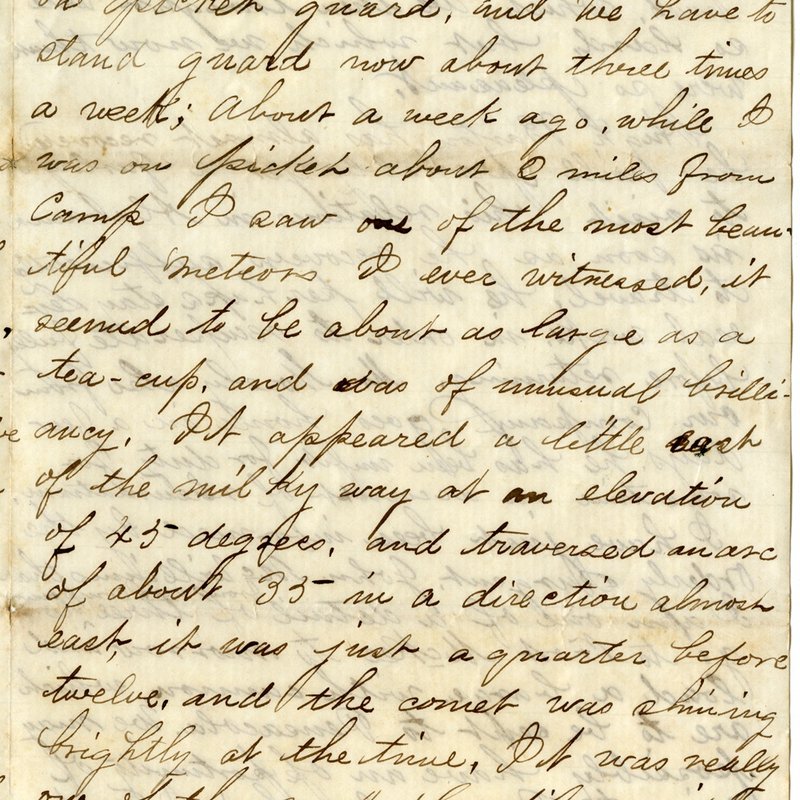Exhibits

Letter from William C. Nelson to Maria C. Nelson (14 July 1861)
A student at the University of Mississippi when the Civil War began, William Cowper Nelson joined the Confederate Army. In a 14 July 1861 letter to his mother from Camp Magnolia near Pensacola, Florida, he writes at length about a celestial sight he observed while standing guard as a picket:
- I saw one of the most beautiful meteors I ever witnessed, it seemed to be about as large as a tea-cup, and was of unusual brilliancy. It appeared a little east of the mil by way of an elevation of 45 degrees, and traversed an arc of about 35 in a direction almost east, it was just a quarter before twelve, and the comet was shining brightly at the time. It was really one of the most beautiful sights I ever observed.
Nelson witnessed the Great Comet of 1861 whose tail actually intersected Earth for two days.
John Wesley Johnson was a student at the University of Mississippi in 1874 when he commented on the appearance of a comet in his journal entries for July 4th and July 11th. Known as the Great Comet of 1874 for its brightness to the naked eye, Coggia is a famous non-periodic comet. Johnson returned to the university and joined the Astronomy and Physics department in 1889.
In a ledger entitled “Astronomical Surveying for Engineers,” Calvin Brown reminisced upon astronomical observations made between 1882 and 1886 as a youth and later an undergraduate student at Vanderbilt University. Brown would earn a doctorate at that institution in geology and a second Ph.D. at the University of Colorado in comparative literature. Hired by the University of Mississippi in 1905, he taught in the Department of Modern Languages while simultaneously working as an archaeologist across the state of Mississippi.
Finally, a printed description of a meteor that landed on a Mississippi farm in 1922 includes a second-hand description of the event by Ed Bush, an African American tenant farmer.
